If you’ve ever watched a martial arts match or even practiced a bit of karate, you’ve probably seen the “Mae Geri” (前蹴り) – the front kick.
It’s one of the most fundamental martial arts techniques, yet its simplicity is so effective in self-defense and sparring.
In this guide, I’ll walk you through everything you need to know to perform the Mae Geri like a pro.
Whether you’re a beginner or have been practicing for a while, this kick can level up your martial arts game.
Let’s break it down step by step, and by the end, you’ll be kicking like a seasoned martial artist!
What is the Mae Geri (Front Kick)?
The “Mae Geri” (前蹴り), also known as the front kick, is a staple in many martial arts like karate, taekwondo, and kickboxing.
To perform this kick, you must first lift your knee and thrust your foot straight out, targeting your opponent’s midsection or head.
It’s not just an attack. Move; you can use it defensively. For instance, The Mae Geri allows you to keep your distance from your opponent while delivering a decisive strike.
It’s an essential technique for beginners and advanced martial artists because Mastering the Mae Geri means laying the foundation for many other advanced techniques.
It’s one of the first kicks you’ll learn, but it’s just as valuable years down the line in your martial arts journey.
Mae Geri has two variations:
- Mae Geri Chudan: This kick attacks to your opponent’s abdomen or groin.
- Mae Geri Jodan: This kick aims for the head or Nose of your opponent.
Even though these kicks aim for different areas, the techniques used to perform these kicks are the same.
How to Perform the Mae Geri – Front Kick
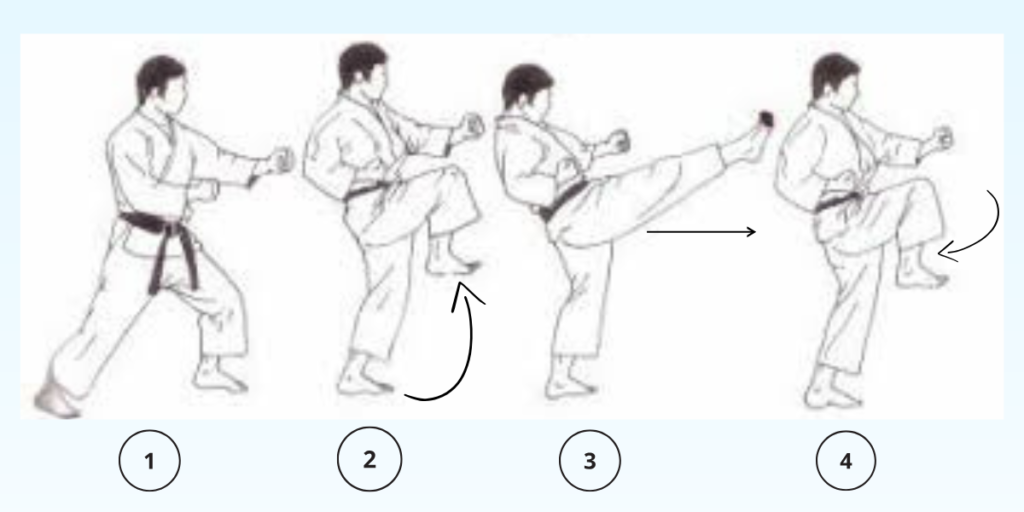
Step-by-Step Guide to Perfect Your Front Kick
The Mae Geri might look simple, but there’s a lot more to it than just kicking forward.
You need to break it down into key steps to perform it effectively.
Step 1 – Starting Position
Before throwing the kick, you must ensure your stance is correct.
Stand with your feet shoulder-width apart, knees slightly bent, and your weight balanced evenly. Keep your hands up to protect your face, especially if practicing in a sparring situation.
Think of your stance as the foundation—without a solid base, your kick won’t have the power or control it needs.
This is where many beginners go wrong, so take a moment to ensure you’re set up correctly before moving on.
Step 2 – Lifting the Knee: The Key to Creating Power in Your Front Kick
Now that you’re in position, the next step is to lift your knee.
This is one of the most crucial parts of the front kick. Your knee should be high like you’re trying to bring it closer to your chest.
The closer you bring your knee to your chest, the more power you’ll generate when you extend your leg.
Step 3 – Extending the Leg: Focus on Precision and Balance
Once your knee is lifted, it’s time to extend your leg.
Push your foot forward in a straight line, aiming to hit with the ball of your foot or the heel.
Keep your leg straight and controlled—don’t just fling it out there!
Balance is the key here.
Ensure that you’re not leaning too far forward or backward. Imagine you’re kicking through an invisible target. This helps with both precision and power.
Step 4 – Recoil: Returning the Foot to the Starting Position Efficiently
Don’t just leave your leg hanging after your kick lands, or you complete the motion.
Quickly recoil your foot back to the starting position. The faster and more efficiently you return your foot, the quicker you can be ready for the next move, whether it’s another kick or a defensive move.
Recoil is just as significant as the kick, as it ensures you stay balanced and ready for anything your opponent throws.
Common Mistakes to Avoid When Performing Mae Geri
- Not lifting the knee enough can weaken the kick and affect your balance. Make sure to focus on bringing your knee up before you extend the leg.
- Lack of recoil: Extending your foot can leave you vulnerable to counterattack. Always return to your starting stance quickly.
- Poor posture: Ensure your posture is strong and balanced, not hunched over or leaning back.
Common Mistakes and How to Avoid Them While Practicing Mae Geri( Front Kick)
Improving Your Front Kick Technique
As with any martial arts move, the Mae Geri can be tricky to get just right. Even if you’ve practiced it a few times, some common mistakes might sneak in and hold you back from reaching your full potential.
Let’s look at a few of these mistakes and how to fix them.
Mistake 1 – Incorrect Hip Alignment
Poor hip alignment is one of the most common errors when performing the Mae Geri. Your hips should stay square and not twist too much during the kick. If your hips are misaligned, it can cause your kick to lose power or even leave you off balance.
How to Fix It: Focus on keeping your hips aligned with your body. Don’t let them open up too early when you lift your knee. Practice by placing your hands on your hips and feeling the movement.
When done right, your hip should rotate naturally when your foot extends. This helps generate power without compromising balance.
Mistake 2 – Poor Balance and Stability
Many beginners have trouble staying stable, especially when extending their legs.
A lack of balance makes the kick less effective and increases the risk of injury.
From my experience, I have found that poor balance and stability are mainly caused by a lack of strength in the legs and core.
How to Fix It: Work on strengthening your core and practicing good posture. Keep your weight evenly distributed, and don’t lean too far forward or backward.
Think of your body as a tall pillar—stable and strong. If you’re struggling with stability, try performing the kick slowly to build control before speeding up.
Mistake 3 – Insufficient Power Generation
Your front kick might lack the power you’re aiming for. This could be due to not using your whole body properly.
Remember, the kick isn’t just about your leg—it’s about using your core, hips, and arms to generate force.
How to Fix It: Focus on using your whole body for the kick. Begin by engaging your core as you lift your knee.
Then, as you extend your leg, push through your hips to generate power. The more you practice this coordinated movement, the stronger your kick will be.
Applying Mae Geri(Front Kick) in Self-Defense and Combat
When and How to Use the Mae Geri Effectively
The Mae Geri is more than just a training move—it’s a kick that can be incredibly useful in real-life situations, whether defending yourself or sparring. Let’s look at a few scenarios where this front kick really shines.
Scenarios Where the Mae Geri is Effective in Self-Defense
In self-defense, the Mae Geri is fantastic for creating distance between you and an attacker.
If someone is coming toward you aggressively, a well-timed front kick can stop them in their tracks.
The power and speed of the kick, mainly when aimed at the midsection or the knee, can cause enough impact to make the attacker rethink their approach.
How to Combine Mae Geri with Other Techniques in Sparring
In sparring, the Mae Geri is often used to control the pace and distance. You can use it as an opening move to keep your opponent at bay or to set up other strikes.
My go-to combo with Mae Geri was first to do a Mae Geri in the abdomen with my back leg, followed by a Mawashi Geri in the head with my other leg.
Stretching and Mobility Exercises for Better Mae Geri Performance
Flexibility plays a huge role in executing a clean, powerful front kick.
Without proper flexibility, your range of motion is limited, and you may struggle to lift your knee high or extend your leg fully.
To improve flexibility, focus on stretching your hips, hamstrings, quads, and calves.
A great stretch to try is the hip flexor stretch. Start by kneeling with one knee on the floor and the other foot flat in front of you, creating a 90-degree angle.
Push your hips forward to stretch the hip flexor on the kneeling leg. Hold for 30 seconds and switch sides.
Dynamic stretches, like leg swings, are also great for warming up before a training session and improving mobility.
Drills to Increase Power and Speed
You need to engage more than just your leg muscles to build power.
The Mae Geri requires full-body movement. Practice explosive jumping front kicks to develop leg strength and speed. You’ll build power that translates into a stronger strike by pushing off with more force.
Another effective drill is the shadow kick drill. Stand in front of a mirror or in an open space and throw a series of Mae Geri kicks at different speeds with both legs.
How to Build a Training Regimen That Enhances Your Front Kick
Consistency is key when improving any technique. To build a training routine that boosts your front kick:
- Warm up with dynamic stretching to prepare your body.
- Focus on flexibility with stretches 3-4 times a week.
- Practice kicking drills for power and speed at least twice a week.
- Incorporate core exercises like planks and leg raises to improve your balance and stability.
- End each session with cool-down stretches to keep your muscles relaxed and flexible.
- Incorporate core exercises like planks and leg raises to improve your balance and stability.
- End each session with cool-down stretches to keep your muscles relaxed and flexible.
Final Thoughts
The Mae Geri is one of the most fundamental and practical karate techniques.
Because of its speed and straightforward techniques, This front kick has been used as an offensive and defensive tool.
In this article, I have covered every aspect of it so that you can understand how to do it and what to do to perform it well in both sparring and real-life situations.
While reading will improve your understanding of this topic, To truly master the Mae Geri, consistency is key.
Practice regularly, focus on your form, and integrate this kick into your training routine.
You Might Also Like






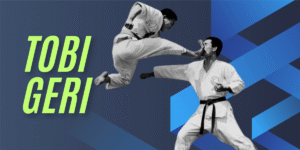
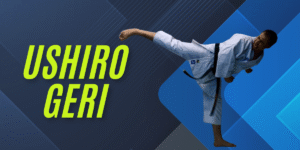

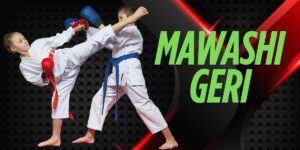
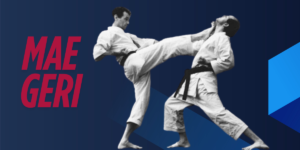
Pingback: Is Karate Effective in a Street Fight? A Karateka’s Perspective